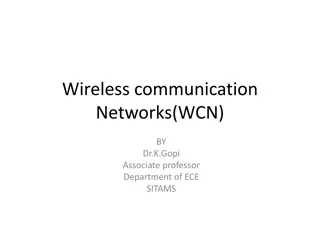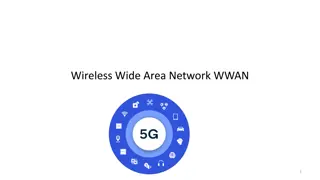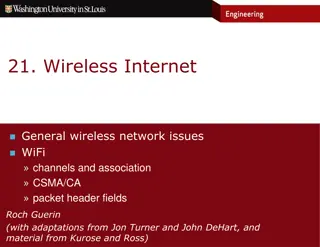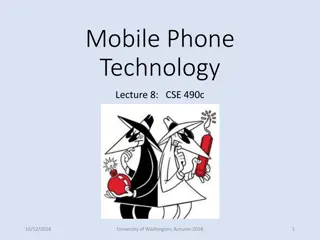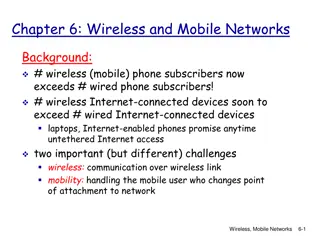Wireless and Mobile Networks Design Visual Symphony
"Explore the fusion of visual art and computer science in the design of wireless and mobile networks. Learn how to detect frequency and amplitude in music and apply them to control filament color and brightness. Unravel challenges faced in signal processing and network interactions. Dive into experiments showcasing the convergence of technology with creativity."
Uploaded on Mar 17, 2025 | 0 Views
Download Presentation

Please find below an Image/Link to download the presentation.
The content on the website is provided AS IS for your information and personal use only. It may not be sold, licensed, or shared on other websites without obtaining consent from the author.If you encounter any issues during the download, it is possible that the publisher has removed the file from their server.
You are allowed to download the files provided on this website for personal or commercial use, subject to the condition that they are used lawfully. All files are the property of their respective owners.
The content on the website is provided AS IS for your information and personal use only. It may not be sold, licensed, or shared on other websites without obtaining consent from the author.
E N D
Presentation Transcript
Wireless and Mobile Networks Design and Laboratory Visual Symphony Qing-qing Zheng Yuan Ma
Introduction The interaction of visual art and computer science Apply the characteristics of music to the characteristics of filament
Principle 1.Frequency and amplitude detection and extraction of music 2.Filament changing color and brightness based on the frequency and amplitude Relations: frequency-->color amplitude-->brightness
Frequency Detection Platform java-->python Java: no fft algorithm Python: pyaudio(play music), wave(read music file), numpy(fft method) Music stored as bytes. Take them out and convert them to float type and also do fft function call, from that output choose the biggest one as the frequency of this chunk. abs(fft()) is the amplitude. Print out the frequency and amplitude to data.txt file
Code Snippet chunk:2048
Problems We Faced in Signal Processing 1.how to detect frequency(fft) 2.python packages installation(No space left) 3.play music(open file error,EOFError) 4.adapt the frequency and amplitude in the matched range
DeviceJS (filament) 1.From data.txt get frequency and amplitude 2.set variable freq and amp to those value 3.assign freq to color, amp to brightness, both between 0.0- 1.0 4.selectByID()-->change color and brightness
Problem We Faced in Network 1. Asynchronous read and write leads to misbehavior of Javascript function 2. Network delay results in asynchronization, doesn t need sleep() here 3. Unstable network environment may results in packet drop, the filament has no reaction 4. When having two filaments connected, the 6LoWPAN buffer can more easily to get overflow and timeout
Experiment Demo 2 Recorder.py: Get streaming music sound Visualizer.py: Call Recorder.py and map each frequency range to each picture Python library: Pygame Pyaudio
Future Work Running the detection and extraction part on cloud? Using an array of filaments? Enabling streaming reading? Decreasing the delay between the controller and the device Increasing network buffer
Software and Hardware Support Language used: Python, Javascript Software support: Python 2.7.3, Node v4.3.1, gcc 4.8.1, g++ 4.8.1 Operating System support: Ubuntu 12.04 or higher Platform support: deviceJS + modules Hardware support: WigWag devices(filament), USB cable A-Male to B-Male


